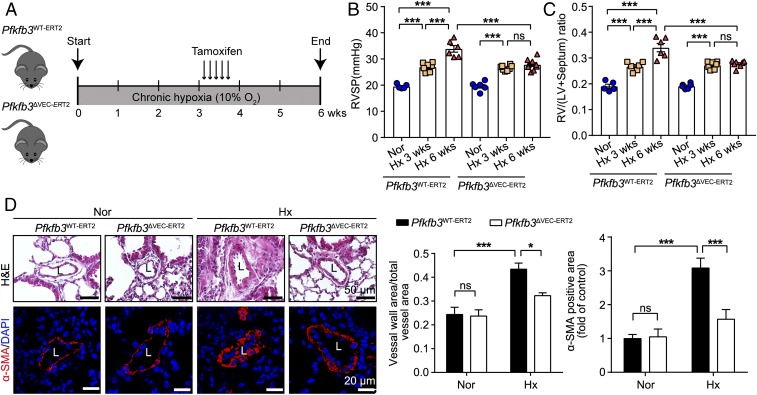Fig. 5.
Inducible deficiency of endothelial-specific Pfkfb3 in mice suppresses the progression of hypoxia-induced PH. (A) Schematic diagram of the experimental design. Inducible endothelial-specific Pfkfb3-deficient mice (Pfkfb3ΔVEC-ERT2) and control mice (Pfkfb3WT-ERT2) were exposed to chronic hypoxia (Hx; 10% O2) for 3 wk followed by 75 mg/kg of tamoxifen injection for 5 d under hypoxia condition. Mice continued to be exposed to hypoxia for 2 wk before assessment. (B) Quantification of RVSP and (C) RV hypertrophy as assessed by RV/LV+septum. (D) (Left) Representative images of H&E staining and α-SMA immunostaining of the distal pulmonary arteries of Pfkfb3WT-ERT2 and Pfkfb3ΔVEC-ERT2 mice under normoxic (Nor) or hypoxic conditions for 6 wk and quantification (Right) of pulmonary artery thickness as measured by the ratio of vessel wall area to total vessel area and the α-SMA immunostaining-positive area. L, lumen (n = 6–7). All data are expressed as mean ± SEM. Statistical significance was determined by one-way ANOVA followed by Bonferroni test. *P < 0.05 was considered significant, ***P < 0.001. ns, no significance.

